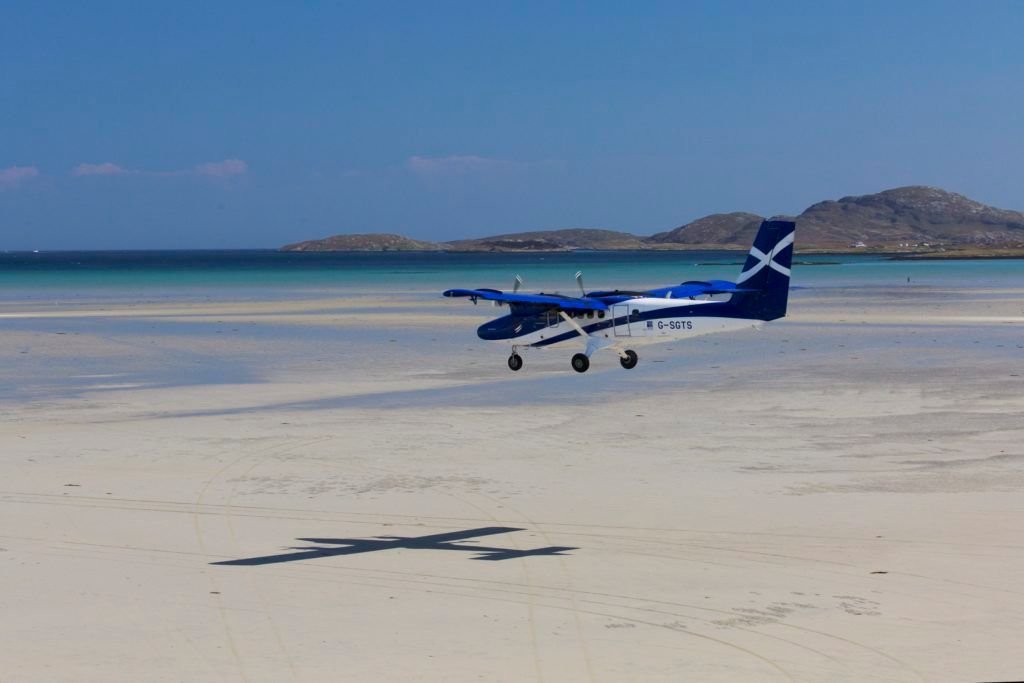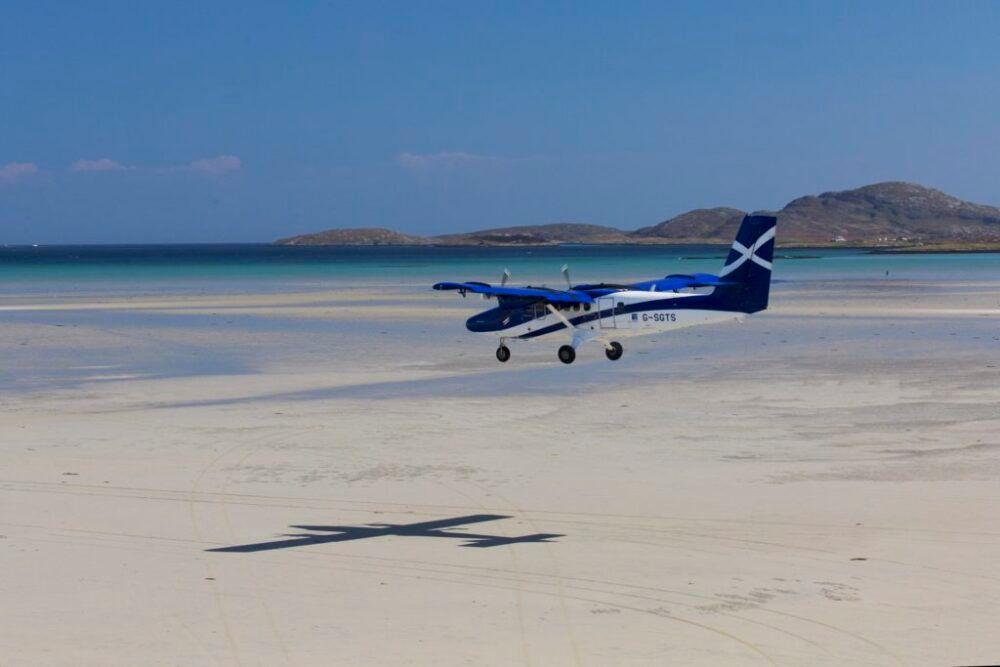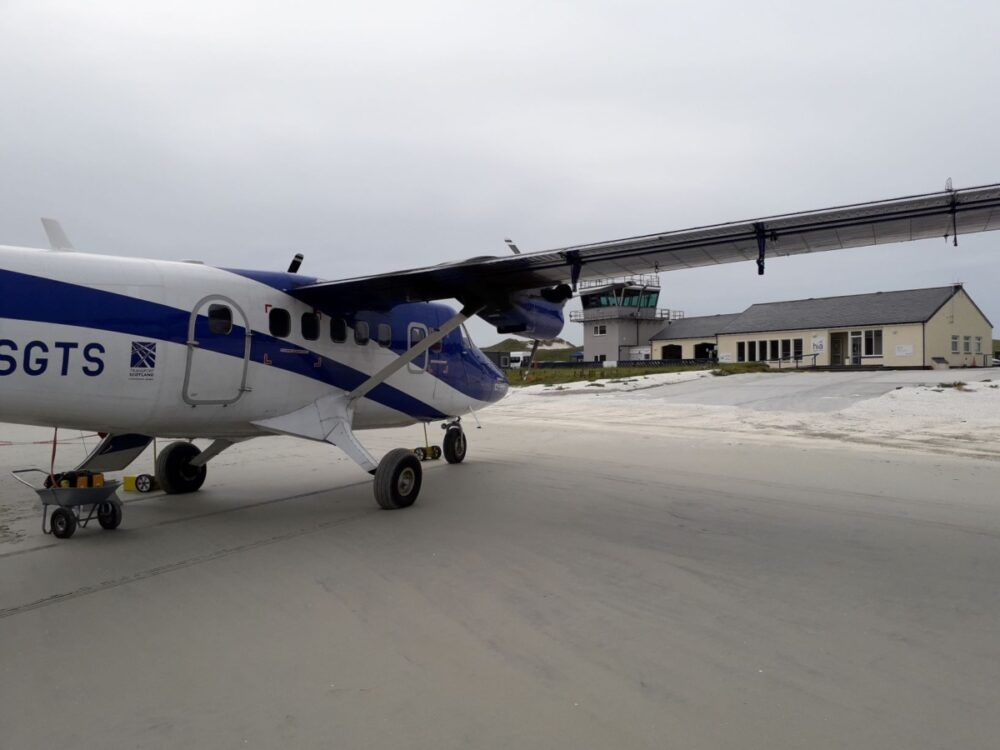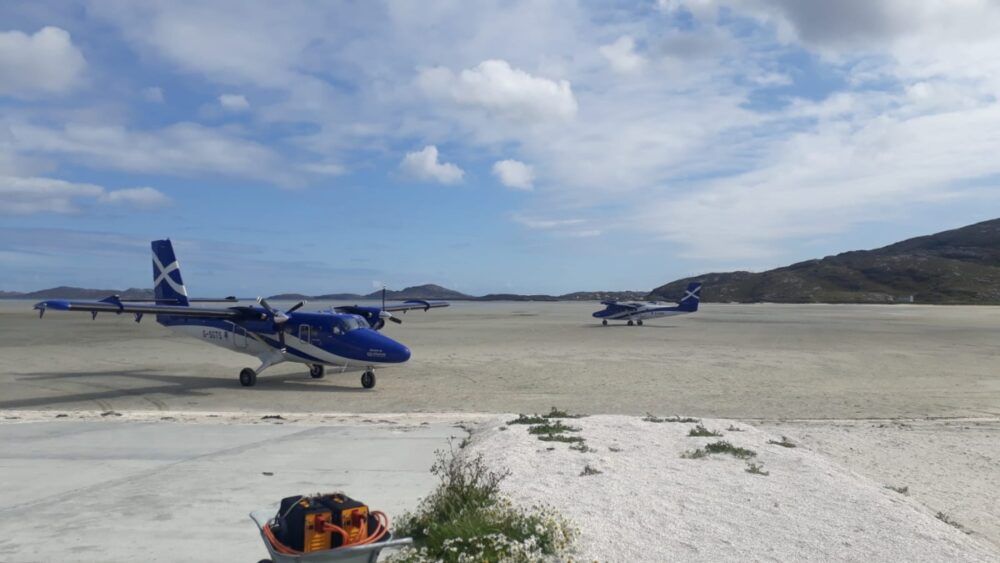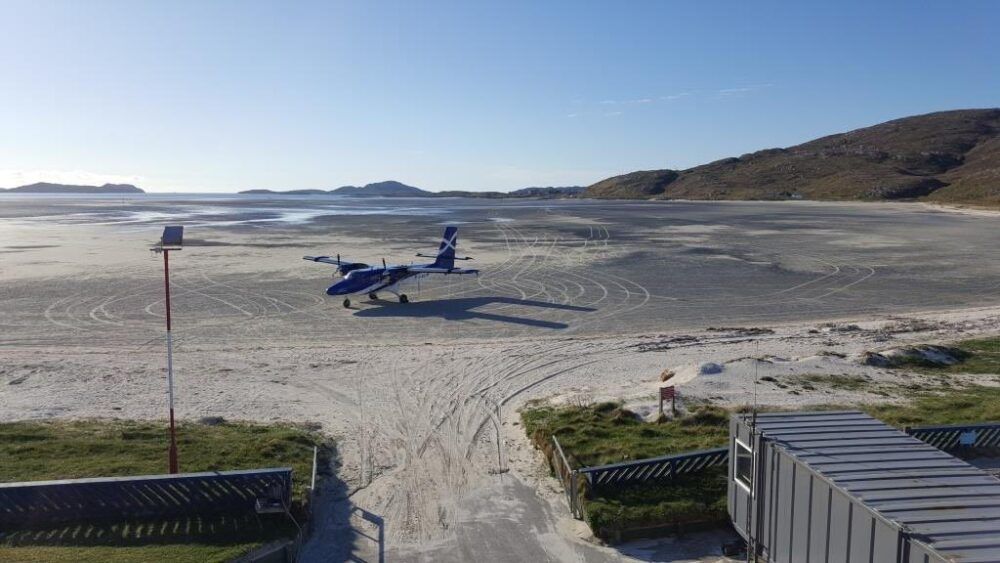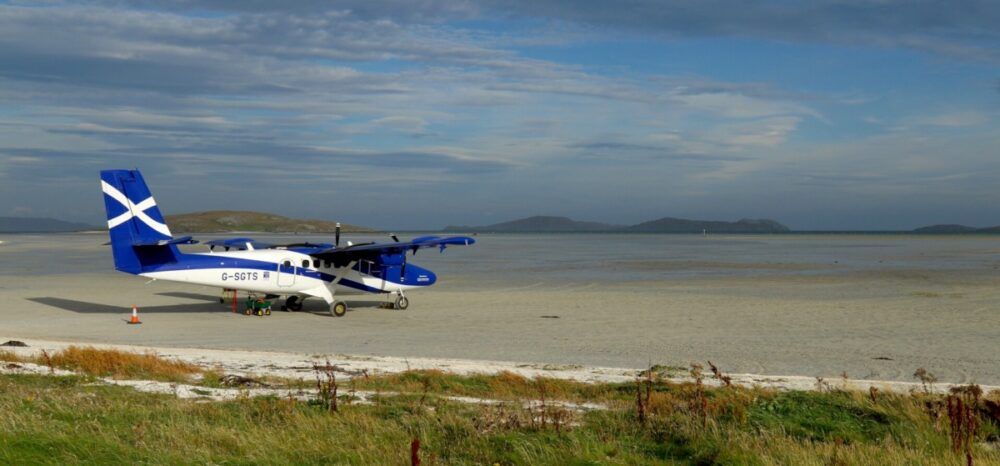Scotland's Barra Airport (BRR) is unique that instead of using a runway, it uses a beach that vanishes at high tide. The airport serves the island of Barra, which, thanks to low passenger numbers and a shortage of land, doesn't have a full airport.
What is the airport like?
The airport is a vast beach that is only accessible in low-tide, specifically Traigh Mhor at the north tip of the island of Barra in the Outer Hebrides, Scotland. It has all the full trappings of a regular regional airport, such as a flight control tower and departure hall - just no actual runway.
Aircraft land on the beach when it is at low tide, with three 'runways' set out in a triangle facing the terminal. This allows aircraft to land in any direction depending on the wind, a bonus for the turboprop that benefits from strong headwinds, as well as other light aircraft that serve this destination.
As the main 'tarmac' of the airport is sand, aircraft need to be light and can only land during the day (thus jet aircraft can't land here). Lights can deploy for emergencies, but the airport doesn't allow planes to land after sunset. The public is not allowed on the beach during aircraft operations, although judging by the weather, it would not be the best place to swim and sunbathe.
Naturally, planes must depart before the tide comes back in; otherwise, aircraft will find themselves underwater before long. Sometimes flights can be delayed due to weather, and planes will take off with the tide lapping against the wheels.
"The boarding process is simple and quick, and as we walk out to the aircraft, the beach is now covered in water about an inch deep." - Matt Falcus on CNN.
Why was it 'created'?
Authorities built the airport (or instead declared it) at the dawn of air travel in 1936. Faster than boats, air travel allows the island community population to be connected and have relatively uninterrupted services (such as mail, hospital and education access) as the mainland.
Plus, with over 10,000 tourists now visiting the island, the air link forms a valuable connection for the local economy. This route, and many others to other islands in Scotland, will never be scrapped as it form the backbone of regional transport.
Who flies there?
As the airport is quite remote, there are few airlines that fly there. Currently, only Loganair flies to the island with a Twin Otter. The twice-daily flight departs mid-morning from Glasglow, Scotland, and returns later in the afternoon.
The daily return option allows tourists and other aviation enthusiasts (this trip is definitely on this authors list) to fly to the island, explore for two hours, and head back on the same day.
What do you think? Would you like to fly to the outer reaches of Scotland? Let us know in the comments.

